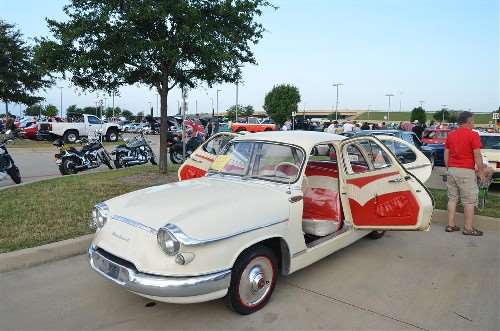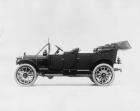|
Re: Trying to identify this "Packard"
|
||||
|---|---|---|---|---|
|
Forum Ambassador

|
Umm...wrong website. That is a PANHARD. French. Bleeech!
Will the site moderator please remove the photo! ICK.
Posted on: 2014/7/8 14:19
|
|||
|
||||
|
Re: Trying to identify this "Packard"
|
||||
|---|---|---|---|---|
|
Just popping in

|
Thank you. Now I understand why I couldn't find it looking for Packard.
Posted on: 2014/7/8 15:54
|
|||
|
||||
|
Re: Trying to identify this "Packard"
|
||||
|---|---|---|---|---|
|
Home away from home
|
Oh, come on David it's not a Packard, but it is kinda cute. There are some nice styling features around the headlights. Panhard is one of the oldest automobile manufactures, being established in 1891, eight years before Packard.
(o{}o)
Posted on: 2014/7/8 17:44
|
|||
|
We move toward
And make happen What occupies our mind... (W. Scherer) |
||||
|
||||
|
Re: Trying to identify this "Packard"
|
||||
|---|---|---|---|---|
|
Home away from home

|
Neat little cars, my Granddad sold them in the late 50's. Looks like an early 60's Dyna. FWD, 2 Cyl opposed air cooled engine with torsion spring valves. They would get around 50 MPG and cruise at 80 MPH all day. I think they weighed only 1500 lbs. or so.
Posted on: 2014/7/8 18:04
|
|||
|
||||
|
Re: Trying to identify this "Packard"
|
||||
|---|---|---|---|---|
|
Home away from home

|
I had failed to realize how close the name Panhard would be to Packard for those of us with quick (or careless) reading skills. Nor had I remembered that both had four torsion bars, although the French car used theirs to close the four valves on the two engine cylinders.
As stated earlier, Panhard was a widely-respected French car maker of most unusual cars, even in a country with Citroens and Peugeots. They made do with unique air-cooled twin cylinder motors that made the lightweight cars quite capable. They were perennial winners in the Monte Carlo rallyes in the fifties and early sixties. Their downfall might have been their penchant for weight-saving. If something saved a few pounds, they tried it. Most of the trim was polished aluminum and paint coats were notoriously thin. Owners really had to work hard keeping that aluminum presentable. Wherever the alloys met with steel presented new corrosion opportunities. So, if you see a nicely kept Dyna-Panhard of any sort, give it a good look for the engineering skill that went into it, and a note of congratulations to the owner who worked hard to keep it up.
Posted on: 2014/7/9 9:39
|
|||
|
||||
|
Re: Trying to identify this "Packard"
|
||||
|---|---|---|---|---|
|
Home away from home

|
Here is a good article about then from hemmings if anyone is interested.
hemmings.com/hsx/stories/2014/03/01/hmn_feature4.html
Posted on: 2014/7/9 9:52
|
|||
|
||||
|
Re: Trying to identify this "Packard"
|
||||
|---|---|---|---|---|
|
Home away from home

|
Great article, thanks!
As mentioned, my Granddad sold these cars at his dealership in Wichita, KS in the late 50's. During summer vacation from school I accompanied him by train from Wichita to the docks at Long Beach CA to pick up his first car. We drove it back to Kansas across the desert on Hwys 66 & 54. Every time we stopped at a gas station, diner or motel the car would draw a crowd, and many asked if it was the "new Packard sportscar", certainly thinking of the just released 1958 Packard Hawk. Well both names were "PAxxARD", right? I recall Granddad lifting the hood for the crowd and putting his hand on the cylinder head and saying "We just drove for four hours across the desert at seventy miles per hour", demonstrating the remarkable air cooling system. I also remember a guy in a Jag roadster (XK120 or XK140) pulling along side us cruising down the highway, looking the little car over and then gunning the Jag and leaving us in a cloud of dust. About an hour later we passed him parked at a gas station with steam pouring out from under the hood. We honked, waved and drove on by. After selling only a handful of Panhards in a year, Granddad gave up on them "Too radical and cost too much". He picked up Renault and did quite well with them (five state distributor) until they self-imploded after 20 or 30K miles of midwest flatlands highway speeds.
Posted on: 2014/7/9 10:58
|
|||
|
||||

 (152.08 KB)
(152.08 KB)







